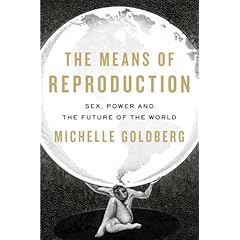


This phrase, coined by Sharon Cameron for the title of her book about Emily Dickinson’s fascicles (the sewn bundles of folded poems found after her death) references Dickinson’s refusal to abide by the conventional poetic prosody of her time, and through her creation of the fascicles, her rejection of set sequencing of her work.
A little over a century later, New Yorker Rachel Lehmann-Haupt chronicles how contemporary women are eschewing linear expectations for family-building and creating innovative combinations of choice. The stakes couldn’t be more different, but this phrase (choosing not choosing) — about Dickinson’s deliberate resistance to restriction into categories — strangely fits as Lehmann-Haupt navigates the channels, islands, and walking-off-the-edge-of-known-territory-into-new-frontiers changes with reproductive options.
In Her Own Sweet Time: Unexpected Adventures in Finding Love, Commitment, and Motherhood recounts Lehmann-Haupt’s reach toward motherhood. She details her relationships, some pulsing with hope they will lead to a walk down the aisle, some clearly just had for fun, but all viewed through the lens of wanting a child and cognizant of her likely decline in ability and aching increase in awareness of these limits. She interweaves personal narrative with factual research and first-hand interviews as she educates herself about freezing her eggs, freezing embryos, single motherhood, donor eggs, donor sperm, and the attendant issues each topic brings – ethical, scientific, financial – and how this clashes with the still-longed-for- “dream.” She explores the consequences of creating an “insta-family” as women (and some men interviewed) grapple with dating and mating under the pressures of time.

Her voice is engaging, although some of the boyfriends grow tiresome. Lehmann-Haupt thinks so too, hence the succession as she also winnows down to what she most wants. I found the book most rewarding when she’s not recounting the quirks of her dates or her busy, jetsetting life, but rather working hard to compress the vagaries of all the reproductive options now available. I wished she would linger longer on the knottier topics that these choices generate.
There is “Luc” who thoughtfully donates sperm and is thrilled to meet the woman who will receive it, yet who becomes far less enchanted when he learns she plans to offer up extra frozen embryos for “adoption” to other families he won’t have the chance to know. Or the doctor who suggests that while reproductive technology can extend the fertility shelf life for many women (at great price), why not work to undermine the system that tells women they should focus on their careers and delay childbearing in sync with their male counterparts? Or the 46-year-old woman who has twins through donor sperm and donor egg but admits she could have been just as happy never having kids. I hoped Lehmann-Haupt would dig deeper into these contradictions, but the book skates back to her dating life and internal wrestling with risk, reality, and wistfulness. When the scientific facts square off with ethics and are then pressed through the powerful feelings her interviewees express, Lehmann-Haupt’s acuity is at its best.
“I don’t like not getting what I want,” says one woman interviewed by Lehmann-Haupt about her decision to become a single mother by choice. And she realizes she feels the same way too. While “choice” has become a highly charged word for women, “options” and wanting to keep them open, seems far less loaded. Lehmann-Haupt ultimately decides to freeze her eggs to keep her reproductive potential likely available for longer into the future, despite knowing the success rates with pregnancy from frozen eggs are still quite variable. In this thoughtful book, Lehmann-Haupt grapples with what “having it all”– or at least trying to – means when modern technology can make the path to motherhood wider or longer, and realizes glad as she is for this, she also really wants a partner to travel beside her. “But nature, in the end, will decide whether I have children or not; science can go only so far,” she writes towards the book’s end.  Her story starts when Lehmann-Haupt is in her early 30s; she finishes it on the cusp of 40, older, wiser, and leavened with the sobering sagacity more knowledge often brings.


 Over at Broadsheet this week, Amy Benfer has
Over at Broadsheet this week, Amy Benfer has  We’re pleased to bring you another cross-post from our friends at Feminist Review. In this week’s edition, Sarah Eve Nichols-Fulghum reviews Michelle Goldberg’s The Means of Reproduction. –Kristen
We’re pleased to bring you another cross-post from our friends at Feminist Review. In this week’s edition, Sarah Eve Nichols-Fulghum reviews Michelle Goldberg’s The Means of Reproduction. –Kristen In his
In his  Oh, happy day! I was alerted by an email from NARAL Pro-Choice America announcing that President Obama has signed an executive order putting an end to the Global Gag Rule after eight arduous years. Yesterday, on the thirty-sixth anniversary of Roe v. Wade, Obama put out the following statement:
Oh, happy day! I was alerted by an email from NARAL Pro-Choice America announcing that President Obama has signed an executive order putting an end to the Global Gag Rule after eight arduous years. Yesterday, on the thirty-sixth anniversary of Roe v. Wade, Obama put out the following statement: It’s a question on all of our minds as we wait and watch to see what the Obama Administration will tackle first. And the feminists are getting busy. Do check out the
It’s a question on all of our minds as we wait and watch to see what the Obama Administration will tackle first. And the feminists are getting busy. Do check out the I just had to put up a quick post highlighting some of the great articles coming out of RH Reality Check discussing what Obama’s administration will mean for reproductive rights. Over a year ago, RH Reality Check published a
I just had to put up a quick post highlighting some of the great articles coming out of RH Reality Check discussing what Obama’s administration will mean for reproductive rights. Over a year ago, RH Reality Check published a 